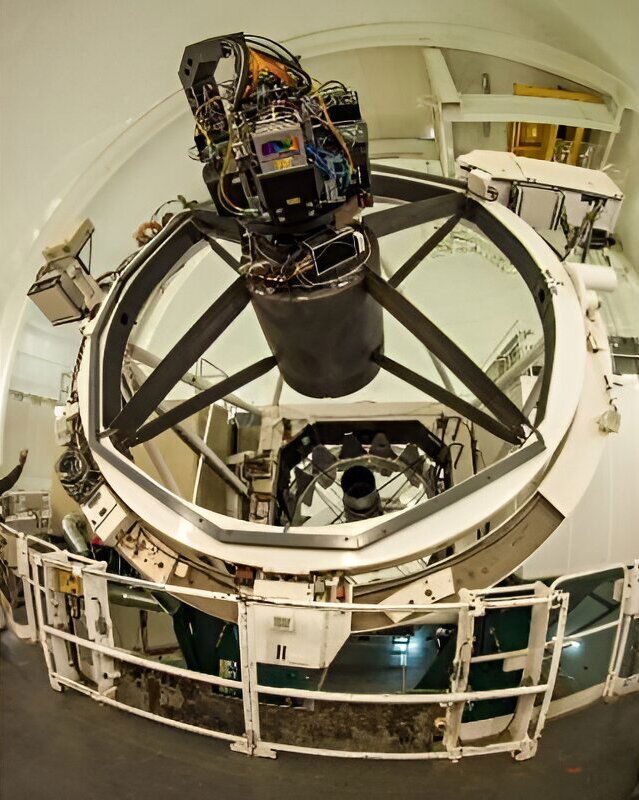
Astronomers have taken a giant leap in understanding the universe by precisely mapping the locations of more than one million galaxies.
This achievement is part of the Physics of the Accelerating Universe Survey (PAUS), a project involving scientists from 14 different institutions around the world.
By surveying a portion of the sky covering 50 square degrees—an area equivalent to 250 full moons—the PAUS team has gathered highly detailed data about galaxies, some of which are more than 10 billion light-years away.
This incredible feat was made possible by a special camera called PAUCam, which is attached to the 4.2-meter William Herschel Telescope located in La Palma, Spain.
What sets this survey apart is its ability to measure galaxy distances with remarkable accuracy, something that previous surveys have struggled to achieve.
Typically, astronomers use two main methods to study distant galaxies: photometric surveys and spectroscopic surveys.
Photometric surveys capture images of the sky, identifying all visible objects, while spectroscopic surveys focus on analyzing the light from known sources, revealing detailed information about each galaxy.
However, spectroscopic surveys are limited by how many galaxies they can observe and how faint those galaxies can be.
PAUS combines the best of both worlds. According to Professor Benjamin Joachimi from University College London, the survey uses images to capture all visible objects but adds a unique twist by using narrow wavelength filters.
These filters allow scientists to know exactly which part of the light spectrum they are observing, helping them reconstruct a low-resolution version of each galaxy’s spectrum.
This innovative approach gives astronomers detailed information about many galaxies at once, making it easier to map their distances and understand how they interact with their surroundings, especially the dark matter that makes up most of the universe.
The detailed galaxy map created by PAUS will be crucial in helping scientists explore how the universe’s structure has formed over time. It will also shed light on the mysterious forces driving the universe’s expansion, particularly dark energy, which is believed to make up about 70% of the universe.
Despite its significance, dark energy remains one of the biggest mysteries in cosmology.
The PAUS project, led by the Institute of Space Sciences (ICE-CSIC) in Spain, collected data over 200 nights between 2015 and 2019. The data is now publicly available on the PAUS website and the CosmoHub portal, allowing astronomers worldwide to use this information to enhance their research.
Professor Enrique Gaztañaga, who leads the PAU Survey, emphasized the groundbreaking nature of the project, highlighting the novel instruments and methods developed to achieve these precise measurements.
The work has already begun to influence other major cosmological surveys, such as the European Space Agency’s Euclid mission and the Rubin Observatory’s Legacy Survey of Space and Time (LSST).
David Navarro-Gironés, a Ph.D. student and first author of one of the PAUS papers, noted that the survey’s precision—measuring galaxy distances with a relative error of just 0.3%—is vital for studying the universe’s structure.
This level of accuracy is key to improving our understanding of how the universe evolves and expanding our knowledge of dark energy and dark matter.
In summary, PAUS is setting a new standard for cosmic surveys, offering scientists a powerful tool to map the universe and uncover its deepest secrets.
Source: University College London.



